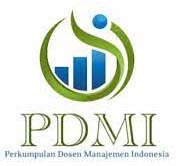TINGKAT LITERASI KEUANGAN PADA MAHASISWA S-1 FAKULTAS EKONOMI
 :
:
https://doi.org/10.9744/jmk.17.1.76-85
Keywords:
Financial literacy, personal finance, gender, age, GPAAbstract
The purpose of this research was to examine the level of financial literacy and the factors that influence undergraduate students of Faculty of Economics. This study distributed 625 questionnaires and only 584 usable questionnaires. Data analysis methods used by this research were descriptive statistics and ANOVA. The level of financial literacy was 48.91% were in the low category. The test results revealed that there was influence of gender, age, GPA, and parents income. The results showed that students should improve their understanding of personal finance, especially in the area of investment, in addition to the university to provide education about personal finance to students. Suggestions for further research was examined throughout the Trisakti University students, using online methods, increasing the number of questions and adding variables such as student income, savings and debt holdings and work experience students.
References
Ansong, A., & Gyensare, M. A. (2012). Determinants of university working-students’ financial literacy at the University of Cape Coast, Ghana. International Journal of Business and Management, 7 (9), 126–133.
ANZ Bank (2011). Adult financial literacy in Australia. Executive summary of the results from 2011 ANZ Survey.
Bhushan, P., & Medury, Y. (2013). Financial literacy and its determinants. International Journal of Engineering, Business and Enterprise Applications (IJEBEA), 4(2), 155–160.
Chen, H., & Volpe, R. P. (1998). An analysis of finan-cial literacy among college students. Financial Services Review, 7(1), 107–128.
Cude, B. J., Lawrence F. C., Lyons A. C., Metzger, K., LeJeune, E., Marks, L., & Machtmes, K. (2006), College students and financial literacy: What they know and what we need to learn. Eastern Family Economics and Resource Management Association 2006 Conference.
Ibrahim, M. L., & Alqaydi, F. R. (2013). Financial literacy, personal financial attitude, and forms of personal debt among residents of the UAE. Inter-national Journal of Economic and Finance, 5 (7), 126–138.
Keown, L. A. (2011). The financial knowledge of Canadians. Component of Statistics Canada Catalogue, 11-008-X, 30–39.
Krishna, A., Rofaida, R., & Sari, M. (2010). Analisis tingkat literasi keuangan di kalangan mahasiswa dan faktor-faktor yang mempengaruhinya. Proceedings of the 4th International Conference on Teacher Education; Join Conference UPI & UPSI Bandung, Indonesia.
Lusardi, A., Mitchell, O. S., & Curto, V. (2010). Financial literacy among the young: Evidence and implications for consumer policy. NBER Working Paper, 15352.
Madura, J. (2011). Personal finance. Fourth Edition. United State of America: Pearson Education, Inc.
Mandell, L. (2008). The financial literacy of young American adult: Results of the 2008 national jump$tart coalition survey of high school seniors and college students. Diunduh 1 Agustus 2014, dari http://www.jumpstart.org/assets/files/2008-SurveyBook. pdf.
Nababan, D., & Sadalia, I. (2012). Analisis personal financial literacy dan financial behavior maha-siswa strata I fakultas ekonomi Universitas Sumatera Utara. Diunduh 1 Agustus 2014, dari http://repository.usu.ac.id/handle/123456789/34557.
Nidar, S. R., & Bestari, S. (2012). Personal literacy among university students (case study at Padjajaran University students, Bandung, Indonesia. World Journal of Social Sciences, 2(4), 162–171.
Remund, D. L. (2010). Financial literacy explicated: The case for a clear definition in an increasingly complex economy. The Journal of Consumer Affairs, 44(2), 276–295.
Sabri, M. F., Othman, M. A., Masud, J., Paim, L., MacDonald, M., & Hira, T. K. (2008). Financial behavior and problems among college students in Malaysia: Research and education implication. Consumer Interest Annual, 54, 166–170.
Servon, L., & Kaestner, R. (2008). Consumer financial literacy and the impact of online banking on the financial behavior of lower-income bank custo-mers. Journal of Consumers Affairs, 42(2), 271–305.
Shaari, N. A., Hasan, N. A., Mohamed, R. K. M. H., & Sabri, M. A. J. M. (2013). Financial literacy: A study among the university student. Interdiscipl-inary Journal of Contemporary Research in Bu-siness, 5(2), 279–299.
Taft, M. K., Hosein, Z. Z., & Mehrizi, S. M.T. (2013). The relation between financial literacy, financial wellbeing and financial concerns. International Journal of Business and Management, 8(11), 63–75.
Uyanto, S. S. (2009). Pedoman analisis data dengan SPSS. Edisi Ketiga. Yogyakarta: Graha Ilmu.
Visa (2012). Visa International Financial Literacy 2012. Diunduh 1 Agustus 2014, dari https:// www.practicalmoneyskills.com/summit2012/decks/bodnar.pdf.
Vitt, L. A., Andersen, C., Kent, J., Lyter, D. M., Siegenthaler, J. K., & Ward, J. (2000). Personal finance and the rush to competence: Financial literacy education in the U.S. Virginia: Institute for Socio-Financial Studies.
Widayati, I. (2012). Faktor-faktor yang mempengaruhi literasi finansial mahasiswa fakultas ekonomi dan bisnis Universitas Brawijaya. Jurnal Akutansi dan Pendidikan 1(1), 89–99.
Worldbank (2011). The Global Financial Inclusion (Global Findex) Database. Diunduh 1 Agustus 2014, dari http://econ.worldbank.org/WBSITE/ EXTERNAL/EXTDEC/EXTRESEARCH/EXT PROGRAMS/EXTFINRES/EXTGLOBALFIN/0,,contentMDK:23147627~pagePK:64168176~piPK:64168140~theSitePK:8519639,00.html.
Downloads
Published
How to Cite
Issue
Section
License
Authors who publish on this journal agree to the following terms:
- Authors retain copyright and grant the journal right of first publication with the work simultaneously licensed under a Creative Commons Attribution License that allows others to share the work with an acknowledgement of the work's authorship and initial publication in this journal.
- Authors are able to enter into separate, additional contractual arrangements for the non-exclusive distribution of the journal's published version of the work (e.g., post it to an institutional repository or publish it in a book), with an acknowledgement of its initial publication in this journal.
- Authors are permitted and encouraged to post their work online (e.g., in institutional repositories or on their website) prior to and during the submission process, as it can lead to productive exchanges, as well as earlier and greater citation of published work (See The Effect of Open Access).

















